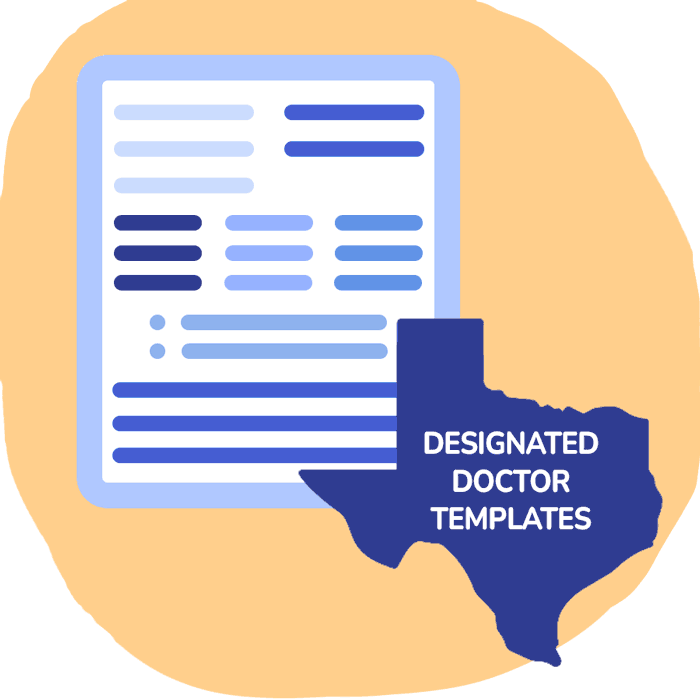TX Reminder: Workers' Comp Reimbursements Higher in 2025

Attention Texas providers—are payers reimbursing your practice at the latest 2025 workers’ comp Medical Fee Guideline rates?
As the first quarter of 2025 draws to a close, Texas providers who treat injured workers should review their Explanations of Benefits (EOBs) to ensure payers adhere to current rates.
Effective January 1, 2025, non-network reimbursement amounts increased by 3.5% for:
Professional medical services
- Surgery that takes place in a facility
- Workers’ compensation specific exam fees
For professional services, this raises reimbursements to 217% of Medicare rates. For surgeries in a facility, this raises reimbursements to 272% of Medicare rates.
Nationally, providers send millions of bills for injured worker treatment through daisyBill each year—and unfortunately, our experience and data show that payers can be slow to update their systems to reflect increases.
Below, see the formula for calculating the Maximum Allowable Reimbursement (MAR) for non-network workers’ comp services, the new Conversion Factors the Medical Fee Guidelines use to calculate those reimbursements, and the new rates for workers’ comp exams.
Remember: Medical Fee Guidelines Are Non-Network Only (With Exceptions)
Medical Fee Guidelines rates apply to:
- Non-network services (i.e., services not subject to a certified Health Care Network)
- Out-of-network emergency care
- Out-of-network care for an employee who does not live in the applicable network’s service area
- Out-of-network care that the applicable network approved
Always determine whether a network applies as part of your intake process. Network care makes up about half of all workers’ comp treatment providers furnish in Texas.
Calculating Medical Fee Guidelines Reimbursement for TX Workers’ Comp
As the Texas Division of Workers’ Compensation (TX DWC) outlined in their recent webinar, Texas bases the workers’ comp Medical Fee Guidelines rates on Medicare’s reimbursement system, with one critical difference: Texas uses its own Conversion Factor.
The Conversion Factor is the dollar amount that multiplies the results of Medicare Relative Value Unit (RVU) and Geographic Practice Cost Index (GPCI) calculations to produce the reimbursement amount. The Medicare reimbursement formula works as follows:
(Physician Work RVU x GPCI) +
(Practice Expense RVU x GPCI) +
(Malpractice Expense RVU x GPCI) =
Total RVU
Total RVU x Medicare Conversion Factor = Medicare Reimbursement Amount
For Texas workers’ comp, the TX DWC replaces the Medicare Conversion Factor with the TX DWC Conversion Factor, as follows:
(Physician Work RVU x GPCI) +
(Practice Expense RVU x GPCI) +
(Malpractice Expense RVU x GPCI) =
Total RVU
Total RVU x TX DWC Conversion Factor = TX DWC Reimbursement Amount
Texas bases its Conversion Factor updates on annual changes to the Medicare Economic Index (MEI), which is a weighted average of price changes for goods and services providers use to deliver physician services.
2025 TX DWC Conversion Factors: Up by 3.5%
For 2025, the TX DWC raised its Conversion Factor by 3.5%. The table below shows the current and historical TX DWC Conversion Factors by year for professional services and surgeries that providers perform in a facility setting.
Professional services include Evaluation and Management, General Medicine, Pathology, Physical Medicine and Rehabilitation, Radiology, and surgery in a non-facility setting.
Effective Date of Service |
TX DWC Conversion Factor (Professional Services) |
TX DWC Conversion Factor (Surgery in a Facility) |
Conversion Factor % Increase |
1/1/2025 |
$70.18 |
$88.10 |
3.5% |
1/1/2024 |
$67.81 |
$85.12 |
4.6% |
1/1/2023 |
$64.83 |
$81.38 |
3.8% |
1/1/2022 |
$62.46 |
$78.37 |
2.1% |
1/1/2021 |
$61.17 |
$76.76 |
1.4% |
1/1/2020 |
$60.32 |
$75.70 |
1.9% |
Workers’ Comp-Specific Exam Fees 2025
The TX DWC updates the flat fees for workers’ comp-specific exams annually. The new (and previous) exam fees are below.
Applicable Dates of Service |
Previous: |
Current: |
Maximum Medical Improvement Exam by Referral Doctor/Required Medical Exam (RME) Doctor/Designated Doctor (DD) |
$449.00 |
$465.00 |
Impairment Rating (IR) Exam by Treating Doctor/Referral Doctor/RME Doctor/DD |
$385.00 |
$398.00 |
Additional IR Area Exam by Treating Doctor/Referral Doctor/RME Doctor/DD |
$192.00 |
$199.00 |
Extent of Injury Exam by RME Doctor/DD |
$642.00 |
$664.00 |
Disability Exam by RME Doctor/DD |
$642.00 |
$664.00 |
Return to Work Exam by RME Doctor/DD |
$642.00 |
$664.00 |
Other Exam by RME Doctor/DD |
$642.00 |
$664.00 |
Missed Appointment (DD ONLY) |
$100.00 |
$104.00 |
Specialist Required (DD ONLY) |
$300.00 |
$311.00 |
Appropriateness of Medical Care (RME DOCTOR ONLY) |
$642.00 |
$664.00 |
Providers, note again that all of the above rates apply to non-network treatment only, with the exceptions we outlined above for emergency care, care for injured workers who live outside the network’s coverage area, and out-of-network care the network approves.
Always check the reimbursement amounts you receive against the applicable fee schedule or network contract and submit a request for reconsideration if the payer improperly denied or adjusted your reimbursement.
In many states, the beginning of the year sees a spike in underpayments as payers fail to adjust to annual increases. Keep an eye on your revenue, and protect your bottom line.
Make workers’ comp billing easy—with daisyBill, Texas providers can get paid fast, and know exactly when to take action on bogus reductions. Schedule a chat with us to learn more.
SCHEDULE CALL
DaisyBill provides content as an insightful service to its readers and clients. It does not offer legal advice and cannot guarantee the accuracy or suitability of its content for a particular purpose.

.gif)



